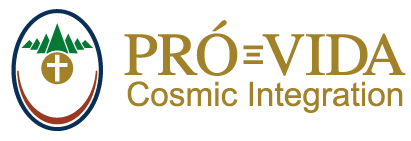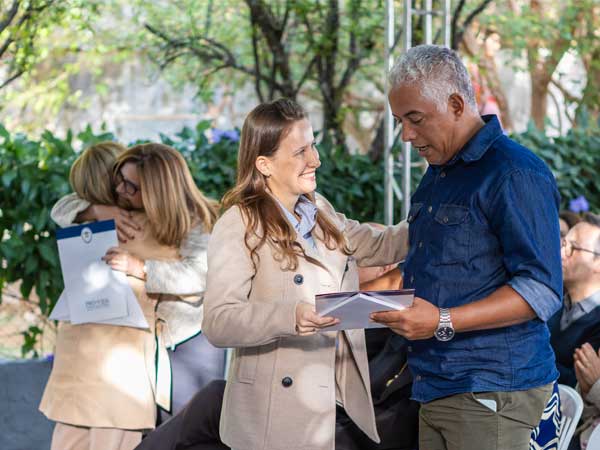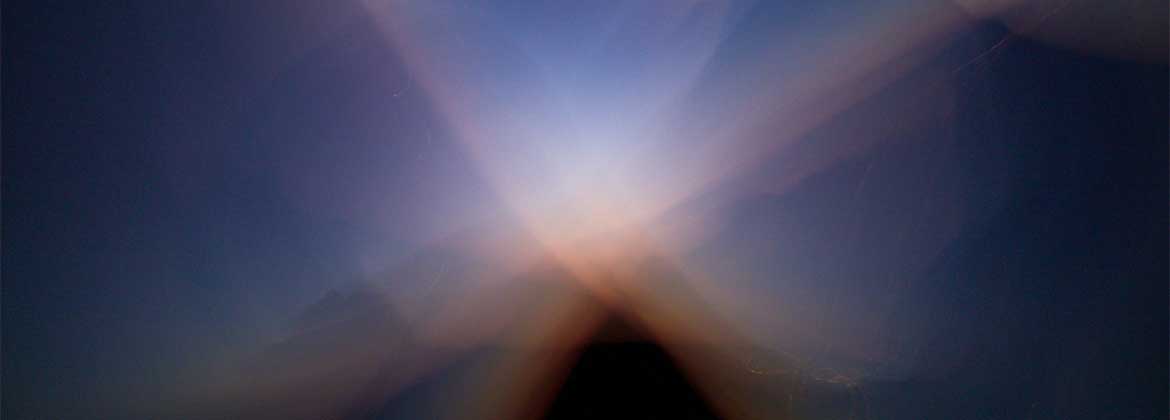Astronomical ephemeris – July, 2021
Astronomical ephemeris – July, 2021


A maximum elongation of a planet, a planetary conjunction and a meteor shower will be three special reasons, among many, that will inspire us to turn our gaze to the night sky of July 2021.
Moon phases

July 1 – Last Quarter
July 9 – New Moon
July 17 – First Quarter
July 23 – Full Moon
July 4
Maximum Elongation of Mercury
In astronomy, elongation or stretching of a planet is the angular separation between the planet and the Sun with reference to the Earth. Maximum elongation is when the planet, in its orbital trajectory, reaches its greatest angular separation from the Sun, which can be eastern – observable on the western horizon after sunset – and western – observable on the eastern horizon before sunrise
In the morning sky of July 4, between 5:30 am and 6:15 am (Brasilia -3UTC), on the eastern horizon, Mercury, the smallest and innermost planet in the Solar System, will be at an angular distance of 21.6 degrees west of the Sun, reaching an altitude of approximately 20 degrees above the horizon in the southern hemisphere, and 15 degrees in the northern hemisphere, glowing brightly at magnitude 0.3; that is, it will be at maximum western elongation.
Observable around the world.
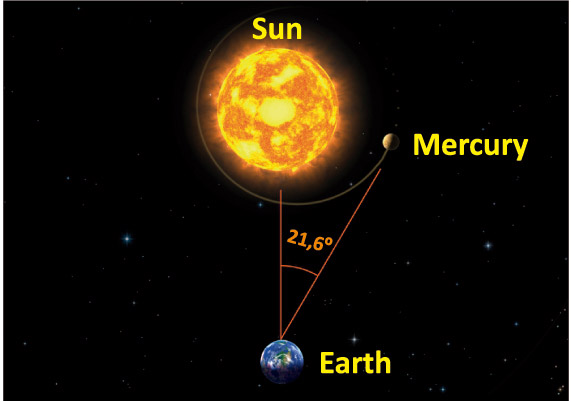
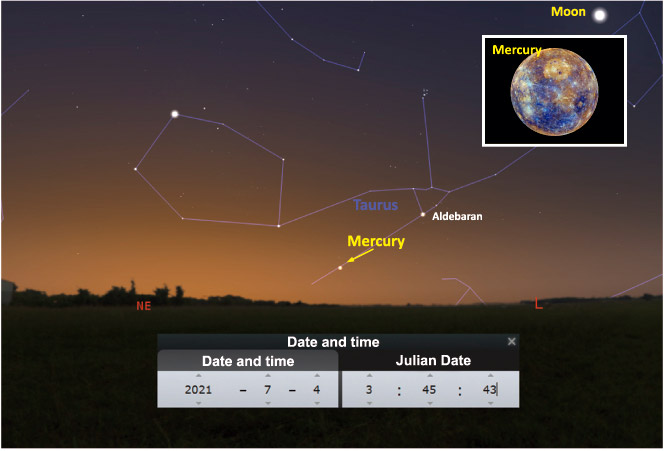
Stellarium simulation for the northern hemisphere
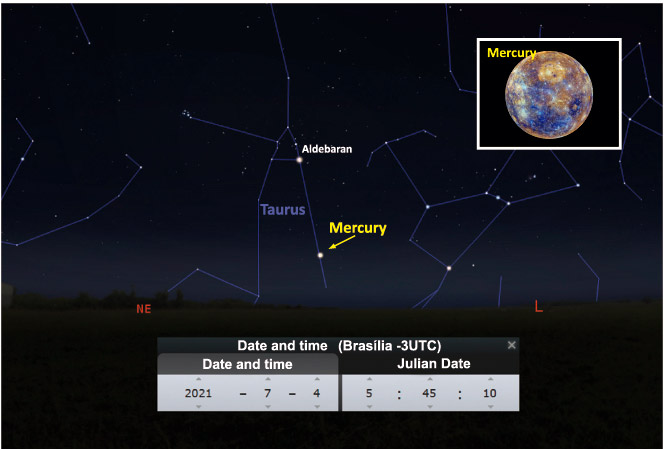
Stellarium simulation for the southern hemisphere
July 25
Conjunction between the Moon and Jupiter
Astronomy tells us that when two or more celestial bodies appear to be very close together in the sky, from the angle of terrestrial observation, we have an event called conjunction.
On the night of July 25, visible in both hemispheres (southern and northern), the Moon and the gas giant Jupiter will be the characters that will stage this event in our cosmos, with Saturn, with its attractive rings, as a special guest.
Jupiter and Saturn will be close together and visible to the naked eye in the night sky throughout the month of July, but not to the point of forming a conjunction with each other. Then comes the bright, full Moon, executing its orbit, and passes close to them almost forming a conjunction with Saturn on the 24 and an alignment between the three on the 26. But on the 25, our satellite will be glued to Jupiter in our eyes, forming the conjunction with it.
To see this performance, the observer must look between the constellations of Aquarius and Capricorn towards the east in the southern hemisphere and, if in the northern hemisphere, towards the south.
Observable around the world.
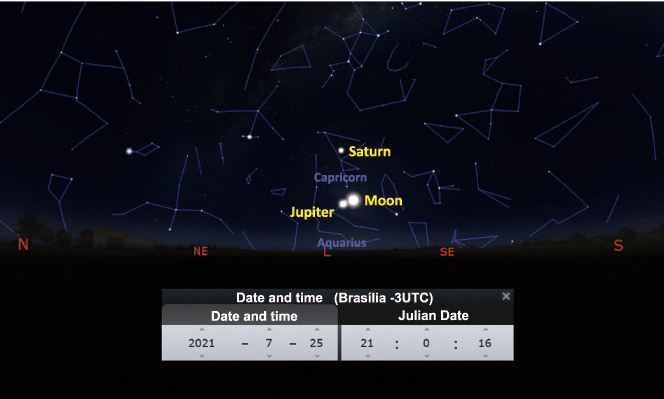
Stellarium simulation for the southern hemisphere
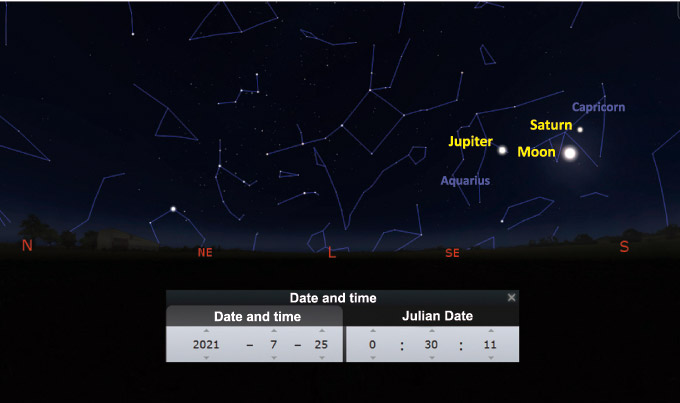
Stellarium simulation for the northern hemisphere
July 28 and 29
Aquariid Delta Meteor Shower
Meteor showers have long aroused man’s curiosity. Ancient records and stories referring to this event evidence this, such as the oldest record of the Perseid meteor shower, made by Chinese astronomers in the year 36 CE.
A meteor shower occurs when debris ejected into space by comets or asteroids enters the Earth’s atmosphere at high speed and burns up, producing a luminous effect. This occurs because the Earth, in the execution of its orbit, crosses the orbit of this debris – called “meteors”, when they enter our atmosphere, and “meteorites”, when they touch our ground.
From our vantage point, the radiation from this group of debris seems to come from a specific point in the sky – called “radiant”.
In July, it will be the turn of the Delta Aquariid shower to light up our firmament with its non-persistent meteor trails.
With activity between the July 12 and August 23 and the apex or peak – moment of greatest activity – on July 28 and 29, it is considered a heavy shower in the southern hemisphere, with an average observation rate of 18 meteors per hour, and medium in the northern hemisphere, with an average rate of 10 meteors per hour at its peak.
It is not known for sure which comet originated this rain. Previously, it was believed to have originated from comets Marsden and Kracht Sungrazing, but nowadays the most suspected candidate for taking the credit is comet 96P Machholz.
Delta Aquariids received its name because its radiant appears to be close to the bright star Delta Aquarii in the constellation Aquarius.
To observe it, look for a spot away from the glare of city lights and direct your gaze to the western horizon, if you are in the southern hemisphere, and the southern horizon, if you are in the northern hemisphere. Before dawn is the best time.
Maybe the visibility, on July 28 and 29, will be a little difficult because the Moon will be in the full moon phase and with 74% illumination.
Observable around the world.
Sources: jpl.nasa.gov/calendar / solarsystem.nasa.gov / in-the-sky.org / Stellarium.org / rmg.co.uk / astro.if.ufrgs / earthsky.org / space.com / derekscope.co.uk / amsmeteor.org / IMO (International Meteor Organization)
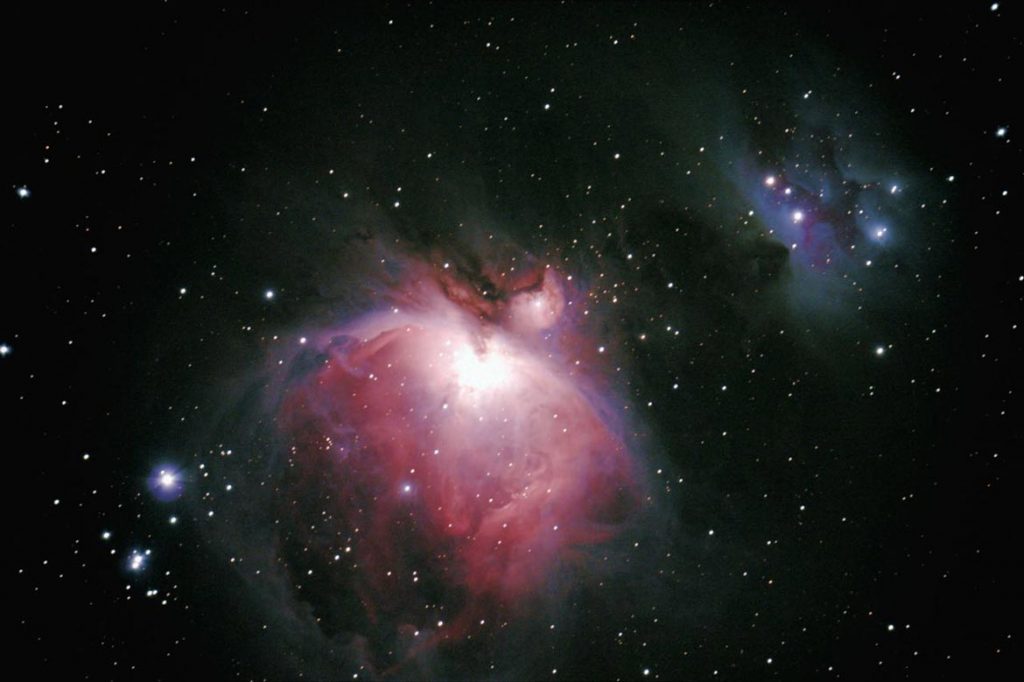
Astronomical ephemerides is a monthly calendar prepared by the Astronomy Sector, which is one of the 12 that make up the PRÓ-VIDA Laboratory Department. In the department, studies, research and scientific experiments related to various themes are developed, as well as field activities and lectures.

Astronomical ephemerides is a monthly calendar prepared by the Astronomy Sector, which is one of the 12 that make up the PRÓ-VIDA Laboratory Department. In the department, studies, research and scientific experiments related to various themes are developed, as well as field activities and lectures.
